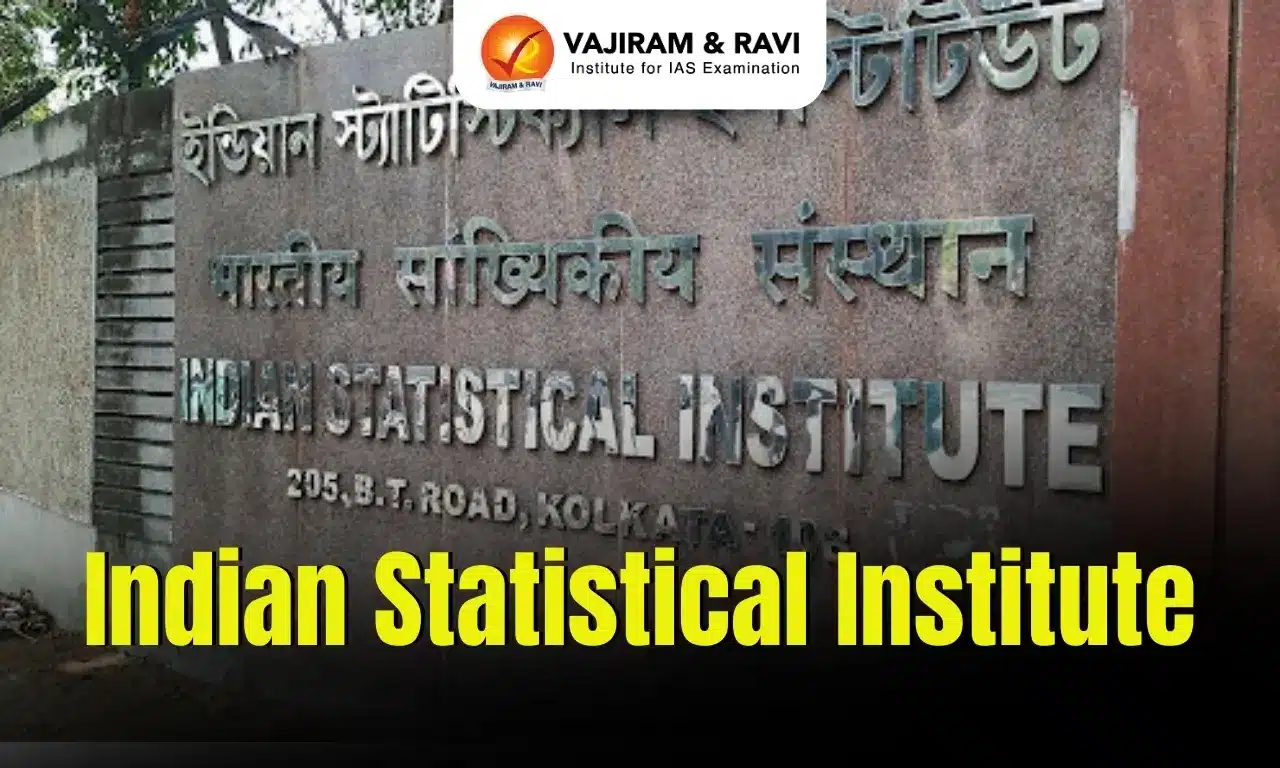What’s in today’s article?
- What’s in today’s article?
- Why in news?
- What is Aditya-L1 Mission?
- What is the significance of Aditya L1 Mission?
- What are Lagrange points?
- News Summary: Aditya L1 set to be placed in final orbit tomorrow
Why in news?
- Aditya L1, India’s first mission to study the Sun, is inching closer to its destination, and would be injected into its final orbit on January 6 evening.
- The spacecraft was launched on September 2 and it would get into what is known as a ‘halo orbit’ around the Lagrange Point 1 (L1)
- L1 is one of the five spots in the moving Sun-Earth system, where the gravitational effects of the two bodies roughly balance each other.
Aditya-L1 Mission
- About
- Aditya (in Sanskrit means Sun) is a planned coronagraphy spacecraft to study solar atmosphere (solar corona – outermost part).
- It has been designed and developed by ISRO and various other Indian research institutes.
- It is the first dedicated Indian mission to observe the Sun. It was launched aboard a PSLV-XL launch vehicle on September 2, 2023.
- Objective
- The suits of Aditya L1’s payloads are expected to provide crucial information for understanding the phenomenon of:
- coronal heating, coronal mass ejection, pre-flare and flare activities and their characteristics,
- the dynamics of space weather, propagation of particles and fields etc.
- The suits of Aditya L1’s payloads are expected to provide crucial information for understanding the phenomenon of:
- Study conducted by Aditya L1
- The spacecraft carries seven payloads to observe:
- the photosphere [the deepest layer of the sun we can directly observe],
- chromosphere [the layer about 400 km and 2,100 km above the photosphere], and
- the outermost layers of the Sun (the corona), using electromagnetic and particle and magnetic field detectors.
- Of the seven playloads, four will directly study the Sun, and the remaining three will in situ study particles and fields at the Lagrange point L1.
- The spacecraft carries seven payloads to observe:
- Remote sensing payloads which will study the sun
- Visible Emission Line Coronagraph (VELC) for corona/imaging and spectroscopy;
- Solar Ultraviolet Imaging Telescope (SUIT) for photosphere and chromosphere imaging;
- Solar Low Energy X-ray Spectrometer (SoLEXS), which is a soft X-ray spectrometer for Sun-as-a-star observation; and
- High Energy L1 Orbiting X-ray Spectrometer (HEL1OS), which is a Hard X-ray spectrometer for Sun-as-a-star observation
- The payloads to study the L1 in situ
- Aditya Solar wind Particle Experiment (ASPEX), for solar wind/particle analyzer protons and heavier ions with directions;
- Plasma Analyser Package For Aditya (PAPA), for solar wind/particle analyzer electrons and heavier ions with directions; and
- Advanced Tri-axial High Resolution Digital Magnetometers for in situ
Significance of Aditya L1 Mission
- India in the big league
- It is the first space-based Indian mission to study the Sun.
- So far, only two other space agencies have had their spacecraft reach L1 or the Lagrange point: USA’s National Aeronautics and Space Administration (NASA) and the European Space Agency (ESA).
- Need to study sun from space
- Studying the Sun from space is essential because the Sun emits various forms of radiation, energetic particles, and magnetic fields in all wavelengths.
- Earth’s atmosphere and magnetic field act as protective shields against harmful solar radiation, making space-based observations crucial for comprehensive understanding.
- Understanding space weather
- Every planet, including Earth and the exoplanets beyond the Solar System, evolves — and this evolution is governed by its parent star.
- The solar weather and environment affect the weather of the entire system.
- Variations in this weather can change the orbits of satellites or shorten their lives, interfere with or damage onboard electronics, and cause power blackouts and other disturbances on Earth.
- Knowledge of solar events is key to understanding space weather.
Lagrange points
- A Lagrange point is a position in space where the gravitational pull of two large masses precisely equals the centripetal force required for a small object to move with them.
- e., at that point, the gravitational attraction and repulsion between two heavenly bodies is such that an object placed between them will effectively stay in the same relative position while moving with them.
- These points in space can be used by spacecraft to reduce fuel consumption needed to remain in position.
- The Lagrange points are named in honour of Italian-French mathematician Josephy-Louis Lagrange, and there are five of them: L1, L2, L3, L4, and L5.
- The L1 point of the Earth-Sun system affords an uninterrupted view of the Sun.
- It is currently home to the Solar and Heliospheric Observatory Satellite SOHO.
- NASA’s James Webb Space Telescope is at L2.
News Summary: Aditya L1 set to be placed in final orbit tomorrow
- With the Aditya L1 spacecraft expected to reach the L1 on January 6, the ISRO will attempt a crucial manoeuvre to bind the spacecraft to an orbit around L1.
- L1 is about 1.5 million km from the Earth and the distance of L1 from Earth is approximately 1% of the Earth-Sun distance.
- A satellite placed in the halo orbit around the L1 point has the major advantage of continuously viewing the Sun without any occultation/eclipse.
- This will provide a greater advantage of observing the solar activities continuously.
Q1) What is photosphere?
The photosphere is the outermost layer of the Sun’s surface and the layer that emits visible light. It is the region of the Sun that we typically think of as the “surface” when we observe the Sun from Earth. The term “photosphere” is derived from the Greek words “photo,” which means light, and “sphaira,” which means sphere, so it essentially translates to “sphere of light.”
Q2) What is chromosphere?
The chromosphere is the second layer of the Sun’s atmosphere, located above the photosphere and below the corona. It is a thin layer of plasma that extends for at least 2,000 km.
Source: ISRO to perform crucial manoeuvre on January 6 to bind Aditya-L1 into L1 orbit | ISRO | Indian Express
Last updated on November, 2025
→ Check out the latest UPSC Syllabus 2026 here.
→ Join Vajiram & Ravi’s Interview Guidance Programme for expert help to crack your final UPSC stage.
→ UPSC Mains Result 2025 is now out.
→ UPSC Notification 2026 is scheduled to be released on January 14, 2026.
→ UPSC Calendar 2026 is released on 15th May, 2025.
→ The UPSC Vacancy 2025 were released 1129, out of which 979 were for UPSC CSE and remaining 150 are for UPSC IFoS.
→ UPSC Prelims 2026 will be conducted on 24th May, 2026 & UPSC Mains 2026 will be conducted on 21st August 2026.
→ The UPSC Selection Process is of 3 stages-Prelims, Mains and Interview.
→ UPSC Result 2024 is released with latest UPSC Marksheet 2024. Check Now!
→ UPSC Prelims Result 2025 is out now for the CSE held on 25 May 2025.
→ UPSC Toppers List 2024 is released now. Shakti Dubey is UPSC AIR 1 2024 Topper.
→ UPSC Prelims Question Paper 2025 and Unofficial Prelims Answer Key 2025 are available now.
→ UPSC Mains Question Paper 2025 is out for Essay, GS 1, 2, 3 & GS 4.
→ UPSC Mains Indian Language Question Paper 2025 is now out.
→ UPSC Mains Optional Question Paper 2025 is now out.
→ Also check Best IAS Coaching in Delhi


















